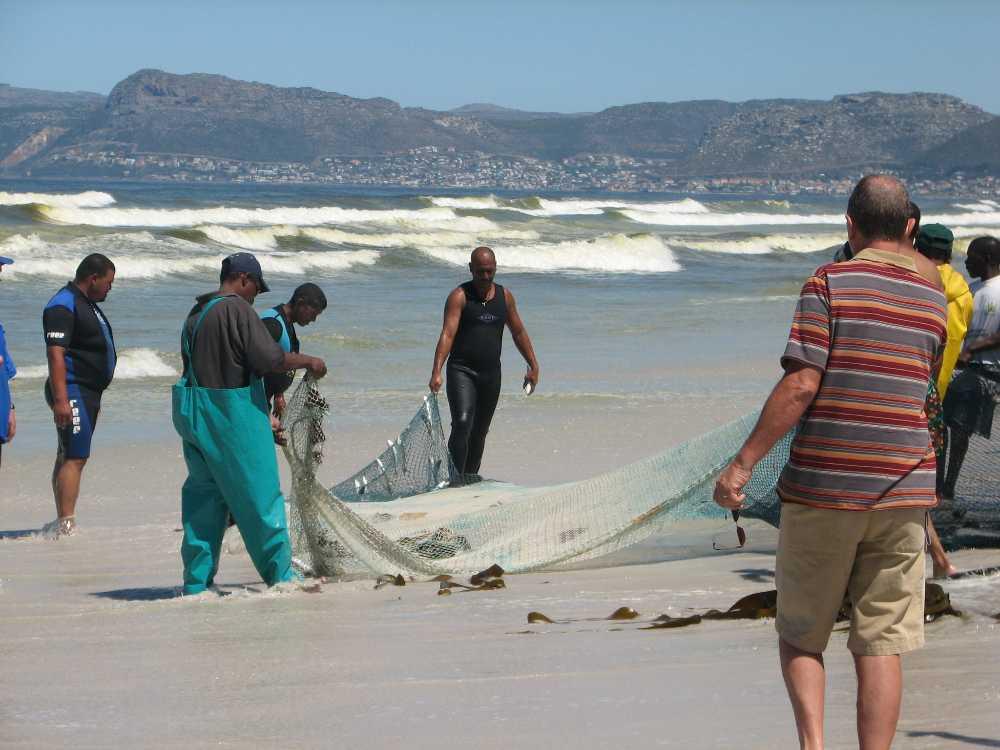
Overview of the IPBES Sustainable Use Summary
31 Aug 2022
Produced by Naturealliance
Overview of the IPBES Sustainable Use Summary for Policymakers
(as agreed at the IPBES Plenary 9, Bonn, in July 2022)
The Summary for Policymakers is structured into layers of information. The first page gives the headings for the four sections of the SPM and the sub-headings for the three sub-sections in each. As each sub-heading is a conclusion of 1-3 lines, the result is a summary cum content-table.
The next page is an Introduction, giving a definition of Sustainable Use, and of Wild Species, before tabulating (Fig 1) eight main types of use (ceremony, decoration, energy, food, education, construction, medicine, recreation) involving four categories of extractive use and one non-extractive for four broad categories of wild species: there are aquatic and terrestrial divisions for animals, with flora considered as either trees or the smaller species (of plants, fungi and algae).
In the following main body of the assessment, each of the four headings (A,B,C,D) has a short paragraph of explanation, followed by the sub-headings (1,2,3), each with 3-16 sections of conclusion-headed text. The text refers richly to the material in the six chapters (1148 pages) that constitute the full Assessment. Each reference comes with one of four categories for qualitative evidence, with “well-established” having best quality, quantity and consistency, through “established but incomplete” and “unresolved” to “inconclusive”. After some 26 pages in this format comes a three-part Appendix: two pages describe the five sustainable use categories (also defining “socio- ecological systems” and “transformative change” and with a four-box model for the confidence of evidence used, followed by two-pages on knowledge gaps.
Under heading A, “Sustainable use of wild species is critical for people and nature”, sub-head A.1 makes clear that billions of people in all regions of the world rely on and benefit from the use of more than 70,000 wild species for food, medicine, energy, income and many other purposes; 2.1 billion rely for fuel and 70% of the world’s poorest people depend directly. Mapping such engagement to the Sustainable Development Goals indicates the substantial overlooked potential of sustainable use for meeting SDG targets (Fig 2).
Heading A.2 focusses on the importance of wild species to indigenous people and local communities, for which the management of sustainable use based on local knowledge can be documented long-term for 87 countries (Fig 3). A.3 addresses a concern that the report might consider only the sustainability of use of wild species, while ignoring benefits of use for conserving species and their ecosystems. Thus, the position of IUCN in 2000, which initiated the AAPG process, is reflected in Section A.3.1 sub-head “Effective management systems that promote the sustainable use of wild species can contribute to broader conservation objectives” before A.3.2 addresses overexploitation.
Although the conservation-through-use aspect is handled extensively in the chapters of the assessment, the SPM focuses most strongly (in A.3.3) on the fact that IPLCs manage 38 million km² of land, which is noted to be 40% of total conserved areas.
Section B, on status and trends in use, looks more extensively at sustainability of use. From IUCN’s Red Lists, use is considered sustainable for 34% of wild species assessed but to create extinction risk for 28-29%. Well-managed fisheries are considered to be most sustainable at present, with only a third of important marine species now over- fished. For five categories of use in which data are adequate to assess trends during last twenty years (Fig 4), sustainability is considered to be improving in large scale fisheries for food, and to be maintained in gathering (of plants, algae and fungi) for food, gathering for aesthetics and harvesting of terrestrial animals for recreation, whereas sustainability of harvesting terrestrial animals for food is assessed as declining.
Sustainability of use for seven further categories is highly variable or unresolved, not least because of an inadequacy of indicators.Section B also looks in detail at processes affecting use. Complexity arises because a multiplicity of drivers (increasingly including climate change) and mediating factors act across the use categories to affect socio-ecological sustainability outcomes (Fig 5). It is pleasing in B.2.4 to see appreciation of the constraints on farming species to reduce demand, as well as realisation that this ‘solution’ can have negative implications for livelihoods, habitat conservation, animal welfare and zoonotic disease. The importance of rights for indigenous peoples in general are considered (B.2.6), as well as issues arising from land-tenure (B.2.7), gender (B.2.8) and trade (B.2.11), but also conflict, culture, science and education. Best-practice guidelines are needed for ecotourism and paucity of indicators is again noted as an issue. Social indicators and those for gathering and for harvesting of terrestrial animal are deemed most deficient (Fig 6).
Section C addresses key elements and conditions for the sustainable use of wild species, including policies, tools and instruments, not least customary institutions and rules. An ’apple-pie-and-motherhood’ aspect of the assessment is the C.1 heading that “Policy instruments and tools are most successful when tailored to the social and ecological contexts of the use of wild species and support fairness, rights and equity”. Conditions for successful planning of protected areas are considered in C.2, which also addresses cases of return to sustainability for large-scale and local fisheries. The importance of monitoring is emphasised and C.3 notes that “Scientific evidence is often limited, and indigenous and local knowledge is underutilized and undervalued”. At C.3.2, who would dispute that “Bringing together scientists and holders of indigenous and local knowledge improves decision-making”?
A consideration of the future in Section D conceives of problems from further changes in human demand and technologies, as well as climate change. The seven key elements that the report identifies for enhancing sustainability of use of wild species include “inclusive and participatory decision-making, inclusion of multiple forms of knowledge and recognition of rights, equitable distribution of costs and benefits, policies tailored to local social and ecological contexts, monitoring of social and ecological conditions and practices, coordinated and align policies, and robust institutions from customary to statutory”. The ability of current conditions to meet these requirements (which to a large extent reflect AAPG recommendations) is assessed in terms of “binding agreements”, “voluntary agreements” and “certification schemes”. While fishing is deemed to be well covered by agreements and certification schemes, harvesting of terrestrial animals is considered subject only to voluntary agreements (Fig 8). However, there can be no contention about the final headings “The world is dynamic and to remain sustainable, use of wild species requires constant negotiation and adaptive management. It also requires a common vision of sustainable use and transformative change in the human-nature relationship” at D.3 and, ultimately, “The sustainable use of wild species will benefit from … a more systemic view that humanity is part of nature” at D.3.4.
This technical overview was prepared by the team at Naturalliance
Photo credit: © Adrian Lombard
No authors to show
We support the free flow of information. Please share:
More content
-
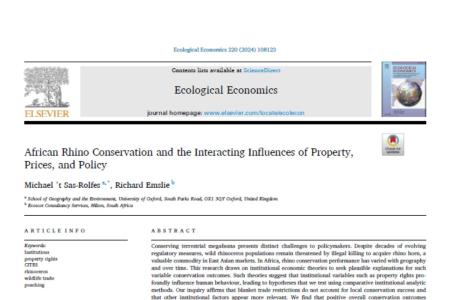
African Rhino Conservation - Interacting Influences
Michael ’t Sas-Rolfes…Conserving terrestrial megafauna presents distinct challenges to policymakers. Despite decades of evolving regulatory measures, wild rhinoceros populations remain...
2024Research -

World Oceans Day: Awakening Africa’s Blue Economy
Dr Francis VorhiesThe theme of World Oceans Day 2024 on 8 June is “Awaken New Depths”. A key topic is the…
Articles -
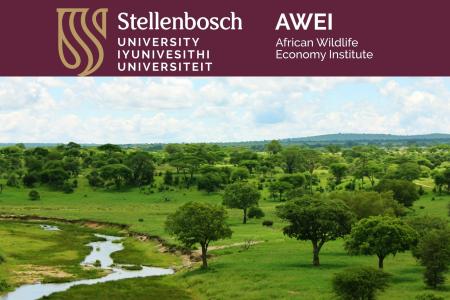
AWEI Updates May 2024
Ms Emily TaylorAs the Wildlife Economy Institute (AWEI) continues to grow and expand its reach, we have decided to produce…
Articles -
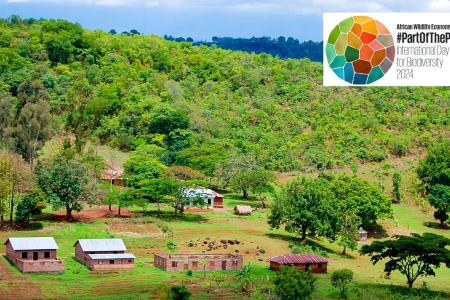
AWEI's role in the Biodiversity Plan for Life on Earth
Dr Francis Vorhies22 May 2024
Through a landscape approach to the development of Africa’s wildlife economy, we are part of…
Articles -
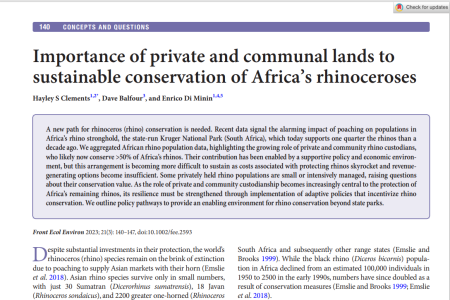
Importance of private and communal lands to sustainable conservation of Africa's rhinoceroses
Dr Hayley Clements…A new path for rhinoceros (rhino) conservation is needed... We aggregated African rhino population data, highlighting the growing...
2023Research -
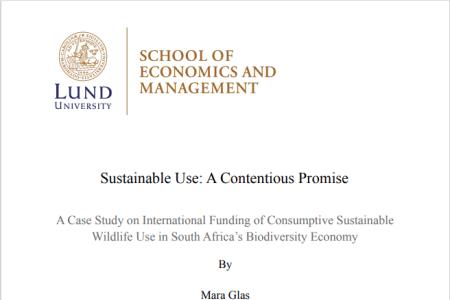
Sustainable Use: A Contentious Promise
Ms Mara GlasA Case Study on International Funding of Consumptive Sustainable Wildlife Use in South Africa's Biodiversity Economy In South...
2022Research -
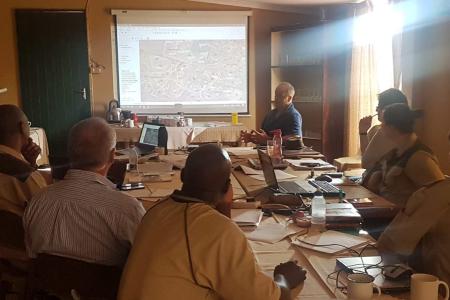
Collaborative governance models of wild product value chains for conservation and livelihood resilience
Mr Thapelo Brilliant LebopaSustainable utilisation of wild products, such as non-timber forest products, wild meat, and medicinal plants, requires governance models…Articles -
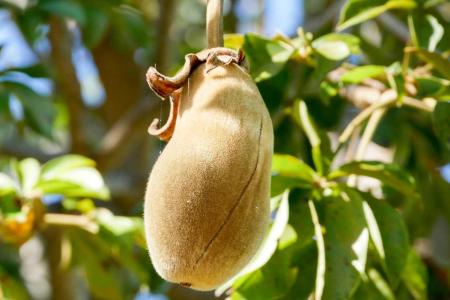
SA’s new biodiversity strategy is a key move away from colonial fortress conservation
Prof Brian Child…It was disappointing to read an article in Daily Maverick that sought to “ring alarm bells” about a…
Articles -
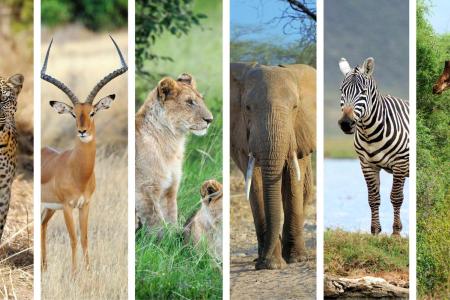
Ensuring the use of wild species benefits people
Dr Francis Vorhies…Observed annually on 3 March, World Wildlife Day is an opportunity for us to celebrate the diverse range of wild…Articles
Get updates by email
Through impactful research, stakeholder engagement, and professional development, AWEI is supporting the wildlife economy across Africa. Please subscribe for occasional updates on our work and forthcoming events.
Sign up for a quarterly dose of AWEI insights
In a complex and changing world, AWEI generates strategic ideas, conducts independent analysis on wildlife economies, and collaborates with global scholar-practitioners to provide training and expertise for biodiversity conservation, climate resilience, and inclusive economic opportunities in Africa.




